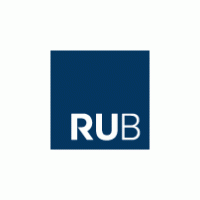In this work, the transport of hydroxyl radicals and hydrogen peroxide from a humid atmospheric pressure plasma jet into plasma-treated liquids is analysed. The concentration of H2O2 was measured by a spectrophotometric approach using the reagent ammonium metavanadate. OH was measured by the terephthalic acid dosimeter and the chemiluminescence of luminol. The plasma jet used is based on the design of the well-investigated COST reference jet and is extended by a capillary between the two electrodes. In addition to the experiments, the 0-dimensional plasma-chemical kinetics code GlobalKin was used to analyse the plasma chemistry in the gas phase in more detail. After 5 min plasma treatment, a maximum H2O2 concentration of 1 mM was found in the liquid, while the OH concentration was a factor 50 lower. The concentrations of both species in the liquid increased with plasma power, and the H2O2 concentration also increased with the humidity concentration of the feed gas, while the OH concentration first increased with humidity admixture and then decreased. The transport of both species could be controlled by the treatment distance, the gas flow rate and low frequency pulsing of the RF jet in such a way that the selectivity towards the long-lived species H2O2 was increased. Qualitative trends in the simulated number densities of gas phase H2O2 and OH at the location of the gas–liquid interface fit relatively well to the experimental measurements in the liquid.
| Field | Value |
|---|---|
| Publisher | |
| Authors | |
| Release Date | 2024-03-08 |
| Identifier | 630ce05a-283c-4f5d-bad5-cdcc04d1ff35 |
| Permanent Identifier (URI) | |
| Is supplementing | |
| Plasma Source Name | |
| Plasma Source Application | |
| Plasma Source Specification | |
| Plasma Source Properties | Two stainless steel electrodes with capillary (borosilicate, wall thickness 0.2mm) in between. Dimension of plasma: width: 1mm, length: 40mm, height: 1mm, Volume: 40mm³. Distance between electrodes: 1.4mm. Distance between electrode (plasma) end to capillary exit: 10mm. Sinusoidal waveform at 13.56 MHz with voltages (rms) between 150 and 700V. Plasma powers of up to 10W. Gas composition varies. |
| License | |
| Plasma Medium Name | |
| Plasma Medium Properties | Flow rate: 0,5 to 2 slm, humidity admixtures: 0 - 6400ppm (0-100% of gas flow through ice cooled bubbler) |
| Plasma Medium Procedure | Cooling of the bubbler 1h before measurements with 900mL ice cubes and 400mL fridge cooled water. |
| Plasma Target Name | |
| Contact Name | Steffen Schüttler |
| Plasma Target Properties | 100mM phosphate buffer |
| Plasma Target Procedure | 3 mL liquid volume in UV cuvette, adjustment of capillary to a distance of 14mm from liquid surface |
| Contact Email | |
| Plasma Diagnostic Properties | Spectrophotometry using ammonium metavanadate, fluorometry using terephthalic acid, chemiluminescence using luminol, zero-dimensional plasma-chemical
kinetics code GlobalKin |
| Public Access Level | Public |
| Plasma Diagnostic Name | |
| Funding Agency | |
| Project | |
| Subproject |
Data and Resources
- plot data figureszip
The zip folder contains folders for the individual figures of the paper, in...
Download - Figure_02_a_experimenttxt
Measured hydrogen peroxide concentration as function of humidity admixture...
Download - Figure_02_a_simulationtxt
Modeled H2O2 density as function of humidity at 1W and 6W plasma power
Download - Figure_02_b_experimenttxt
Measured hydrogen peroxide concentration as function of plasma power at...
Download - Figure_02_b_simulationtxt
Modeled H2O2 density as function of humidity at 1W and 6W plasma power
Download - Figure_03_a_H2O2_productiontxt
Production rate of H2O2 in plasma region and effluent at 6400ppm
Download - Figure_03_b_H2O2_consumptiontxt
Consumption rate of H2O2 in plasma region and effluent at 6400ppm
Download - Figure_04_a_experimenttxt
Measured hydroxyl radical concentration as function of humidity admixture at...
Download - Figure_04_a_simulationtxt
Modeled OH density as function of humidity at 1W and 6W plasma power
Download - Figure_04_b_experimenttxt
Measured hydroxyl radical concentration as function of humidity admixture at...
Download - Figure_04_b_simulationtxt
Modeled OH density as function of plasma power at 640ppm and 6400ppm
Download - Figure_05_b_OH_consumptiontxt
Consumption rate of OH in plasma region and effluent at 6400ppm
Download - Figure_06_a_species_densites_640ppmzip
Plots of species (H2O,H2O2,OH,H,O,O2,HO2) density in plasma and effluent at...
Download - Figure_06_b_species_densites_6400ppmzip
Plots of species (H2O,H2O2,OH,H,O,O2,HO2) density in plasma and effluent at...
Download - Figure_07_Luminol_pictures_humidityzip
Picture of the chemiluminescence of luminol for various humidity admixtures...
Download - Figure_08_Luminol_pictures_powerzip
Picture of the chemiluminescence of luminol for various plasma powers at...
Download - Figure_09_a_experimenttxt
Measured hydrogen peroxide concentration as a function of distance from...
Download - Figure_09_a_simulationtxt
Modeled hydrogen peroxide density as a function of distance at 6W and...
Download - Figure_09_b_experimenttxt
Measured hydroxyl concentration as a function of distance from plasma to...
Download - Figure_09_b_simulationtxt
Modeled hydroxyl density as a function of distance at 6W and 6400ppm
Download - Figure_10_OH_production_effluenttxt
Production rates of hydroxyl radical in the effluent region
Download - Figure_10_b_OH_consumption_effluenttxt
Consumption rates of hydroxyl radical in the effluent region
Download - Figure_11_Luminol_pictures_heightzip
Pictures of the chemiluminescence of luminol for various distances from...
Download - Figure_12_a_experimenttxt
Measured hydrogen peroxide concentration as a function of gas flow rate at...
Download - Figure_12_a_simulationtxt
Modeled hydrogen peroxide density as a function of gas flow rate at 6W and...
Download - Figure_12_b_experimenttxt
Measured hydroxyl concentration as a function of gas flow rate at 6W and...
Download - Figure_12_b_simulationtxt
Modeled hydrogen peroxide density as a function of gas flow rate at 6W and...
Download - Figure_13_Luminol_pictures_flowzip
Pictures of the chemiluminescence of luminol for various gas flow rates at...
Download - Figure_14_a_10percenttxt
Measured hydrogen peroxide concentration in power modulation case at 10%...
Download - Figure_14_a_50percenttxt
Measured hydrogen peroxide concentration in power modulation case at 50%...
Download - Figure_14_b_10percenttxt
Measured hydroxyl concentration in power modulation case at 10% duty cycle...
Download - Figure_14_b_50percenttxt
Measured hydroxyl concentration in power modulation case at 50% duty cycle...
Download


![[Open Data]](https://assets.okfn.org/images/ok_buttons/od_80x15_blue.png)